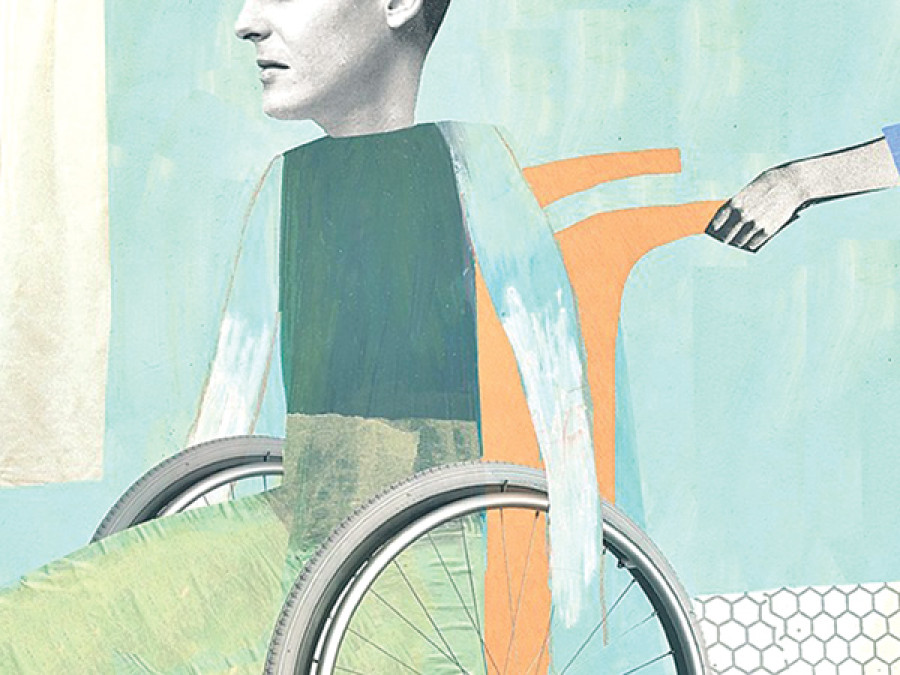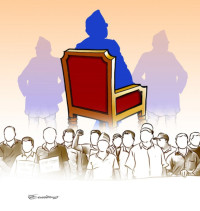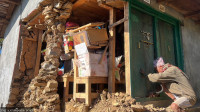Opinion
Inclusion for the disabled
Development organisations need to open up their programmes for people with disabilities
Sudarshan Neupane
Following specific indicators set by the Sustainable Development Goals to address major concerns of people with disabilities, ‘disability inclusion’ has now become a catchphrase in the development sector. In the case of Nepal, several actors are involved to make this change happen. Primarily, Disabled Persons Organisations (DPOs) and the National Federation of the Disabled Nepal (NFDN) are engaged in lobbying and advocating for the rights of persons with disabilities. Disability-focused agencies have also played an important role in showcasing different models of disability-inclusive practices. And most importantly, the government of Nepal has created an enabling environment for disability-inclusion agendas to flourish. However, despite these efforts, there still appears a dilemma in the country about ensuring disability inclusion in the country.
Besides being a right in itself, disability inclusion consists of various measures. In Nepal, inclusion of disabled persons in the community self-help groups has helped them to receive disability identity cards and enjoy other social protection measures provided by the state. National and international experiences have proven that people with disabilities are fully capable of engaging in various income generating activities, and are able to lead dignified lives if they get the opportunity. Many organisations in the country have started focusing on both disabled and non-disabled persons to meet inclusion targets, which is a positive trend. But to that end, organisations need to adopt adaptive measures and be prepared to change the organisational set-up to ensure sustainable access for people with disabilities.
Poverty and disability
People with disabilities are among the most vulnerable individuals in every society. According to the World Bank, 20 percent of the world’s poorest people have some form of disability, and there is a strong link between poverty and disability. Poor people are engaged in the world’s most hazardous jobs such as mining, construction and manufacturing that are more likely than other jobs to lead to some form of disability. People with disabilities have less access to education and skill development and are more often prevented from participating in economic life. They face discrimination while seeking employment or skill enhancement activities. In order to break this vicious cycle of poverty and disability, development organisations need to play a vital role in creating economic opportunities for persons with disabilities.
However, in reality development agencies working in developing countries such as Nepal do not consider employing disabled persons to the extent possible. This is not necessarily due to ill will. Many of these organisations are generally not aware of the skills and capacities of people with disabilities and often lack knowledge about how best to utilise their talent.
Practical strategies
It is very important to realise that people with disabilities have similar needs like everyone else. Most often, only small adjustments are necessary to make services more inclusive for them in buildings, computers, water pumps, toilets and public transportation. International studies have shown that 80 percent of persons with disabilities can participate in social life without any specific high-cost expertise. Depending on disability types, some special equipment and services may be required, which can also be made available through community-based rehabilitation programmes. Mobility International, a disability-led non-profit organisation, advices organisations to allocate two to seven percent of their budget— to cover the cost of awareness, sign language interpretation, accessibility, assistive devices and transportation—as part of including people with disabilities in their programmes.
To make their services accessible, mainstream development organisations need to open up their programmes for people with disabilities. Ideally, all development projects should train at least a few staff on how to deal with people with disabilities. In this way, the trained staff can share their ideas about various prejudices against disabled persons with other colleagues.
A significant way to promote inclusion in organisations is by creating inclusive policies. All agencies should review their existing human resources and gender and social inclusion policies and examine how disability issues are addressed in them. Certain adaptation may be adequate for some policies, but if necessary, organisations should be willing to revise their policies in order to make them disability inclusive. There are various disability specialised agencies that can provide support for such initiatives. Another central aspect is continuous measurement of progress towards inclusion. No organisation may have the perfect example of inclusion in all aspects; therefore, it is wise to continue reflecting, learning, adapting and improving their services for persons with disabilities.
In conclusion, there is no single path towards ensuring disability inclusion. Organisations must create a friendly environment so that people with disabilities and DPOs can openly put forward their views and recommendations. Besides, staff of these organisations can bring valuable and practical insights and come up with essential measures towards disability inclusion. As Professor Stephen Hawking rightly said, “disability need not be an obstacle to success.” If the government and its development partners are dedicated to removing barriers that people with disabilities face, it will be a turning point for people with disabilities in Nepal. It is certainly easier said than done, but disability inclusion is not impossible if all concerned stakeholders are committed to it.
Neupane is Project Manager at Handicap International Nepal. Views expressed in this article are personal. He can be reached at [email protected]




 15.12°C Kathmandu
15.12°C Kathmandu










